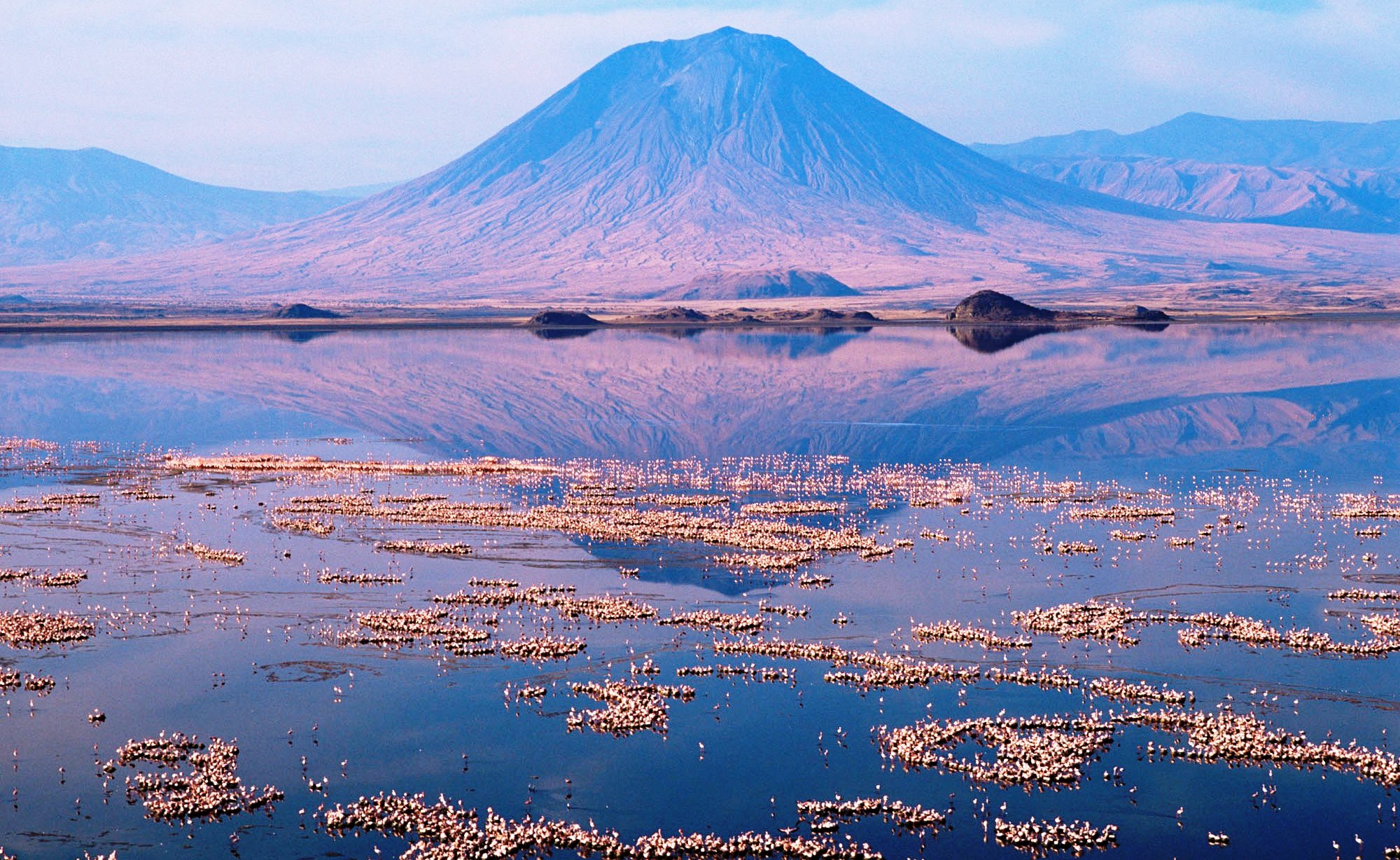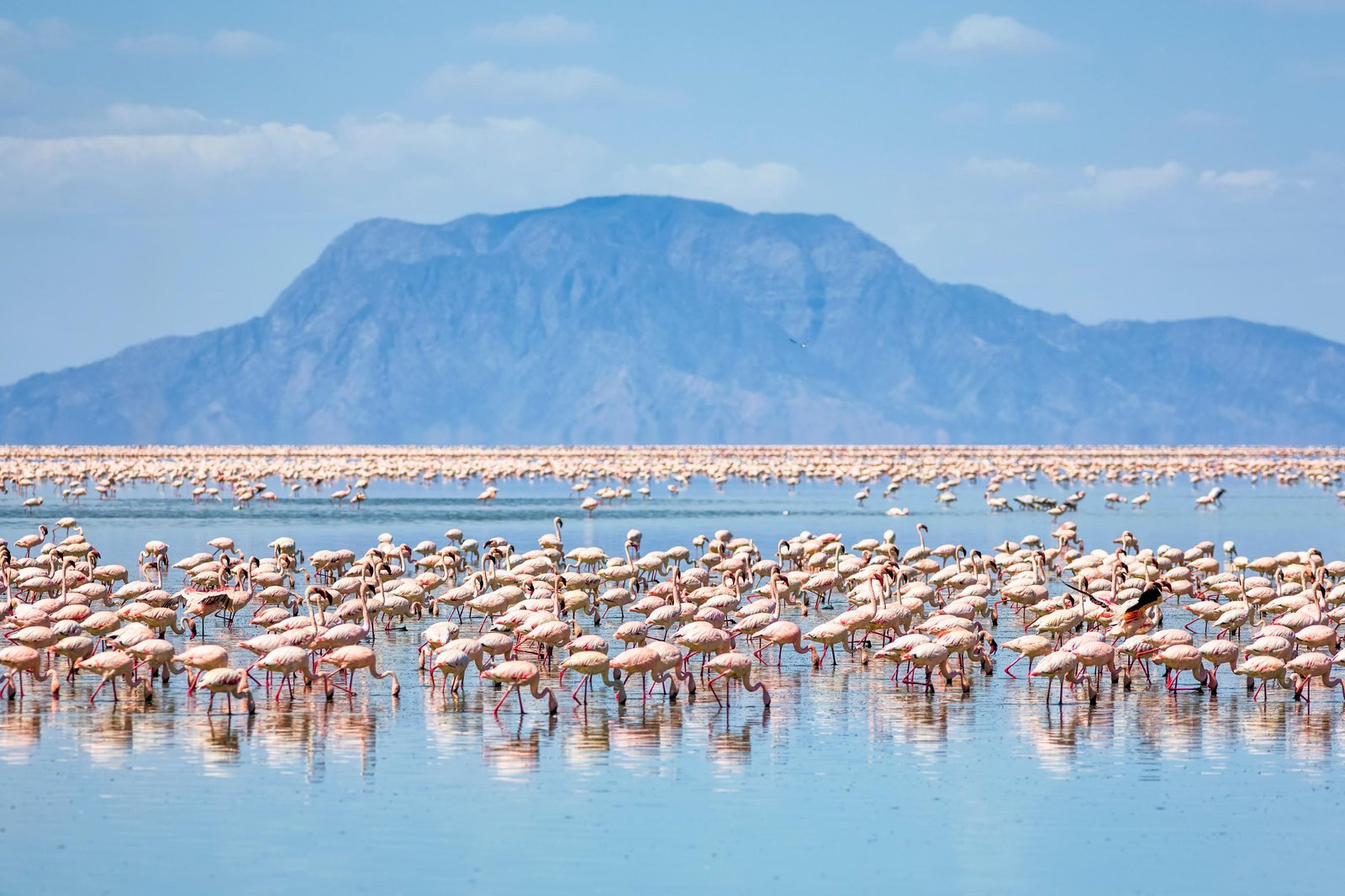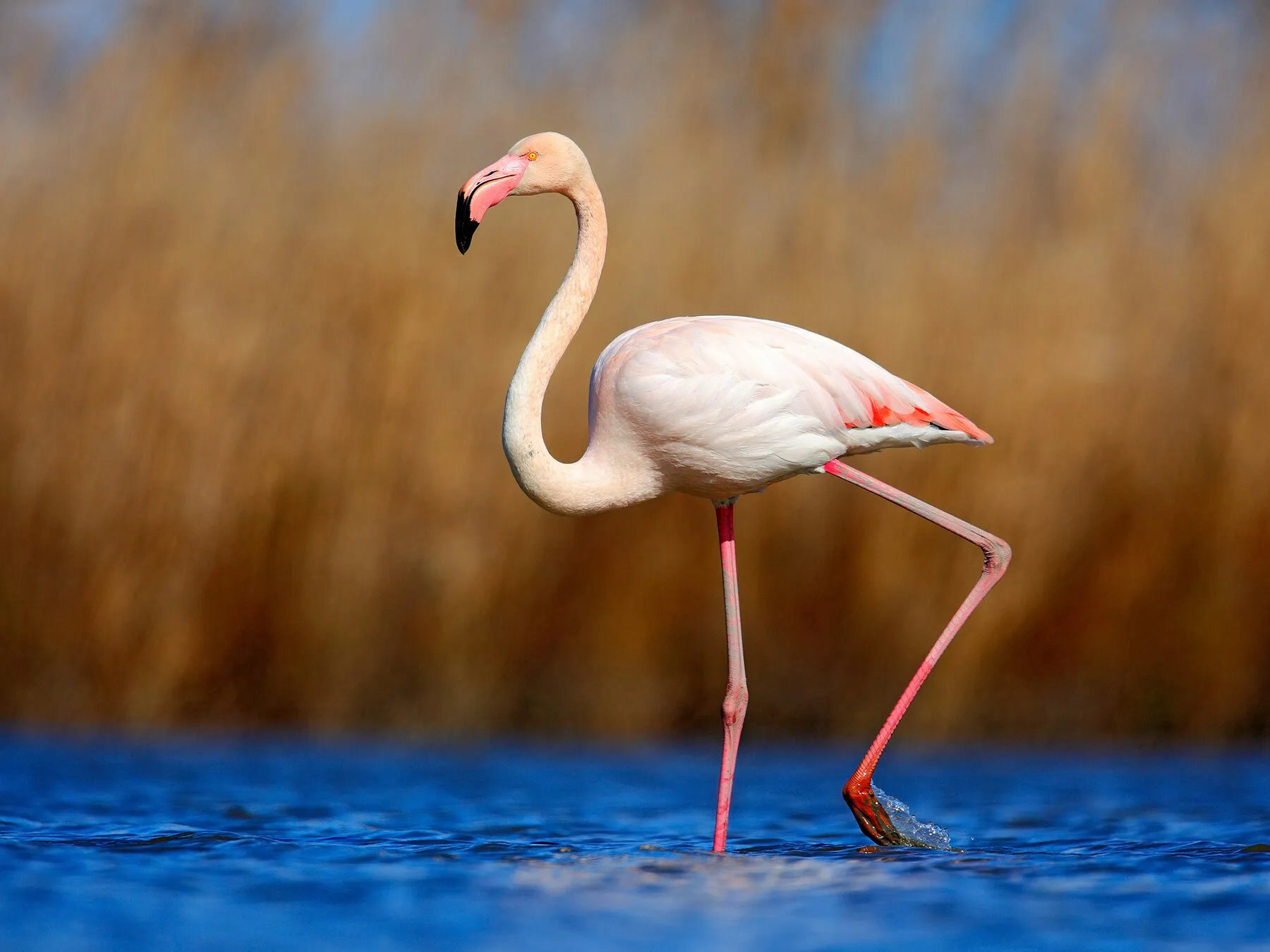Blog
Lake Natron, Tanzania: Natural wonder and largest breeding ground for lesser flamingos
Nestled within the eastern arm of Africa’s Great Rift Valley lies Lake Natron, a breathtaking natural wonder that captivates visitors with its haunting beauty and vibrant ecosystems. This stunning saline lake serves not only as a stark reminder of nature’s raw power but also as the largest breeding ground for lesser flamingos in the world. The unique geography, ecology, and cultural significance of Lake Natron weave together a tapestry of life that is both fascinating and vital to the region’s biodiversity.

Lake Natron
Lake Natron, renowned for its incredibly high alkalinity and extraordinary reddish hue, is a truly remarkable natural environment. Its unique features stem from various geological and hydrological processes that shape its ecosystem and influence the wildlife that thrives here. As we explore the multifaceted aspects of Lake Natron, we will delve into its formation, chemistry, and ecological significance, highlighting why it stands out as one of Tanzania’s most intriguing destinations.
>>> Buy now: American Flag Flamingo Hawaiian Shirt Summer Aloha Shirt, Short Sleeve Hawaiian Shirt
Geographical Formation
The formation of Lake Natron is linked to volcanic activity and the tectonic movements that characterize the East African Rift System. Located at an elevation of 600 meters above sea level, this shallow lake stretches approximately 57 kilometers in length and covers an area of around 104 square kilometers. The lake was formed through the accumulation of water from various rivers flowing down from the surrounding hills, primarily the Engare Sero River.
As part of the rift valley system, Lake Natron is framed by rugged mountains that enhance its remote beauty. The steep cliffs and arid landscapes surrounding the lake create a unique microclimate that fosters an array of plant and animal species adapted to extreme conditions. Additionally, the nearby active volcano, Ol Doinyo Lengai—known as “The Mountain of God”—contributes to the mineral-rich waters of Lake Natron, accentuating its geological significance.
The interplay between volcanic activity and hydrology not only shapes the physical landscape but also plays a crucial role in influencing the chemical composition of the lake. This combination of elements creates an environment where few species can survive, but those that do have adapted remarkably well.
Chemical Composition
Lake Natron is known for having some of the highest levels of salinity and alkalinity found in any body of water on Earth. The lake’s unique chemical profile is mainly attributed to the presence of sodium carbonate, which gives the water its characteristic red color. This vibrant hue is further enhanced by the thriving populations of algae that flourish in these extreme conditions, creating a striking visual contrast against the stark, rocky landscape.
The alkalinity of the lake can reach pH levels of around 12, which is lethal to many standard aquatic organisms. However, certain extremophiles—organisms that thrive in extreme environments—find a sanctuary in Lake Natron. These microorganisms not only adapt to the harsh chemical conditions but also form the foundation of the lake’s food web, supporting various other species.
The salt crust that forms on the surface of Lake Natron acts as a natural barrier that protects the ecosystem from invasive species. This isolation allows for a unique evolutionary pathway for the resident flora and fauna, enhancing their ability to survive and reproduce in such challenging conditions.
Biodiversity and Ecosystem
Despite its harsh conditions, Lake Natron is home to a diverse range of species that have evolved to thrive within its unique ecosystem. The lake is particularly famous for being the largest breeding ground for lesser flamingos, which flock to its shores in astounding numbers during the breeding season. The presence of specialized algae, which provide essential nutrients for the flamingos, contributes to the lake’s ecological importance.
The lesser flamingo (Phoenicopterus minor) is uniquely adapted to life in alkaline habitats. Their specialized beaks allow them to filter-feed on the microorganisms and algae present in the lake, making them perfectly suited to the high salinity levels. During the breeding season, thousands of these majestic birds congregate along the shores of Lake Natron, creating a mesmerizing spectacle that attracts birdwatchers and photographers from around the globe.
Other animals, including various fish species, insects, and reptiles, also inhabit the area around the lake. Many of these species rely on the seasonal influx of water from the Engare Sero River, which provides critical resources for their survival. The dynamic interactions between species contribute to the rich biodiversity of the region and highlight the delicate balance that sustains the ecosystem.
In summary, the geographical formation, chemical composition, and biodiversity of Lake Natron come together to create a unique natural wonder that showcases the resilience of life in extreme environments. Understanding these components helps us appreciate the complexity of ecosystems and underscores the importance of protecting such fragile habitats.
Tanzania: Natural wonder and largest breeding ground for lesser flamingos
Tanzania is often celebrated for its breathtaking landscapes, rich wildlife, and diverse ecosystems, and Lake Natron embodies all these characteristics while playing a crucial role in the country’s environmental narrative. This stunning locale has become synonymous with Tanzania’s commitment to conservation and preservation of its natural wonders. In this section, we will explore the broader implications of Lake Natron on Tanzania’s culture, tourism, and conservation efforts.
Cultural Significance
The presence of Lake Natron in Tanzania also holds cultural significance for local communities. The indigenous people who inhabit the surrounding areas have long revered the lake, viewing it as a sacred site intertwined with their spiritual beliefs and practices. The relationship between the communities and the lake is multifaceted, encompassing aspects of daily life, economic activities, and traditions.
Historically, the lake has served as a source of livelihood for many local residents. The unique minerals found in the lake have been harvested for medicinal purposes and used in traditional practices. Furthermore, the lake’s proximity to livestock grazing lands has made it an important resource for pastoralist communities seeking water sources for their cattle.
However, it is essential to acknowledge the evolving dynamics in the region as external influences, such as tourism and environmental conservation initiatives, impact these indigenous lifestyles. Balancing modern development with traditional values presents both challenges and opportunities for local communities.
Tourism and Economic Impact
Lake Natron has emerged as a significant tourist attraction, drawing visitors from around the globe who seek to witness its ethereal beauty and observe the lesser flamingos in their natural habitat. The uniqueness of the landscape, combined with the availability of eco-friendly lodges and guided tours, makes it an appealing destination for adventure seekers, birdwatchers, and photographers alike.
The economic impact of tourism in the region cannot be overstated. Increased visitor interest in Lake Natron creates job opportunities for local residents, providing them with sources of income through hospitality, guiding services, and crafts. Moreover, the revenue generated from tourism contributes to local economies and supports conservation efforts aimed at preserving the delicate ecosystem of the area.
However, with the growth of tourism comes the responsibility to ensure that it is sustainable and does not compromise the integrity of Lake Natron’s environment. Striking a balance between promoting tourism and protecting the fragile ecosystems is imperative to maintaining the lake’s natural wonder for future generations.
Conservation Efforts
Conservation initiatives centered around Lake Natron have gained momentum in recent years as awareness about the ecological value of the region has increased. Various governmental and non-governmental organizations are collaborating to implement strategies aimed at safeguarding the lake’s biodiversity and promoting sustainable tourism.
One of the primary objectives of conservation efforts is to protect the breeding grounds of the lesser flamingos. Establishing protected areas ensures that human activities do not encroach on critical nesting sites, allowing the flamingo population to thrive. Monitoring programs are also in place to study the health of the flamingo colonies and assess how they respond to changes in environmental conditions.
Additionally, community involvement is key to successful conservation. Local residents are encouraged to participate in conservation programs and embrace sustainable practices that benefit both the environment and their livelihoods. Through education and engagement initiatives, the local population is empowered to take ownership of their natural resources, fostering a sense of stewardship toward Lake Natron and its surrounding ecosystems.
Overall, the cultural significance, economic impact, and conservation efforts associated with Lake Natron highlight the multifaceted relationships between people and their environment. Recognizing these connections is essential for ensuring that this natural wonder continues to flourish in harmony with the communities that depend on it.
In conclusion, Lake Natron, Tanzania, stands as a testament to the beauty and resilience of nature. Its remarkable geographical formation, unique chemical composition, and rich biodiversity create a captivating environment that deserves admiration and protection. As the largest breeding ground for lesser flamingos, Lake Natron plays a pivotal role in sustaining not only this iconic species but the entire ecosystem that flourishes within its borders.
Moreover, the cultural significance and economic potential associated with the lake underscore the importance of balancing conservation efforts with sustainable tourism practices. By fostering an understanding of the delicate interconnections between people and nature, we can help ensure that Lake Natron remains a cherished natural wonder for generations to come.
>>> Read more: Kylie Jenner Teases Potential Fragrance Line Expansion Through Instagram Posts
As you embark on your journey to explore the enchanting landscapes of Tanzania, let Lake Natron inspire awe and appreciation for the intricate tapestry of life that exists in the most unexpected places. Embrace the opportunity to witness the beauty of this remarkable lake, and remember that every visit contributes to the ongoing story of conservation and respect for our planet’s natural treasures.


